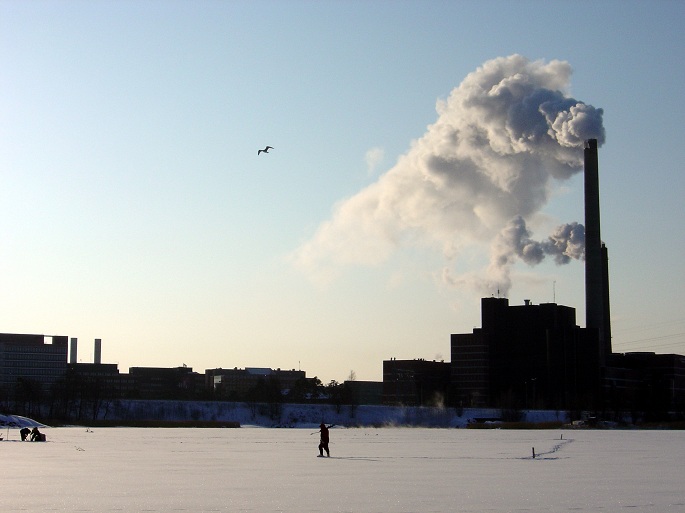Emissions drop by 4% in 2022
Published : 31 May 2023, 21:54
Updated : 31 May 2023, 21:58
Greenhouse gas emissions without the land use sector fell by four per cent in 2022 from the previous year, according to Statistics Finland.
Total greenhouse gas emissions without the land use in 2022 amounted to 45.8 million tonnes of CO₂ equivalent, which was 2.0 million tonnes less than in 2021.
The land use sector (LULUCF) was a net sink of minus 1.0 million tonnes of CO₂ equivalent.
Emissions in the effort sharing sector were below the annual emission allocations set by the EU for 2022.
The land use sector (LULUCF) was a net sink in 2022, because the amount of carbon sequestration in different pools during the year exceeded emissions by 1.0 million tonnes of CO₂ equivalent.
Emissions have fallen by 36 per cent from the comparison year 1990 and by 47 per cent from 2003, when emissions were at their highest during the 1990 to 2022 time series.
According to the UNFCCC reporting practice, total emissions do not include land-use sector emissions and removals, unless separately mentioned.
The energy sector was the largest source of greenhouse gas emissions in Finland, accounting for 72 per cent (33.0 million tonnes of CO₂ equivalent) of total emissions in 2022. The sector's emissions decreased by 1.3 million tonnes of CO₂ equivalent from the previous year. The decrease was particularly due to the fallen consumption of natural gas, which was caused by the high price of natural gas and the ending of imports from Russia. This decreased emissions by 2.1 million tonnes of CO₂ equivalent. On the other hand, the growth in the consumption of hard coal increased emissions by 0.8 million tonnes of CO₂ equivalent. Emissions from transport remained on level with the previous year.
Emissions from industrial processes and product use made up around 10 per cent (4.7 million tonnes of CO₂ eq.) of total emissions in 2022 and they fell by nearly 12 per cent (0.6 million tonnes of CO₂ eq.) from the previous year. The main reason for the decrease in emissions was the nearly one-fifth fall in emissions from the metal industry (0.4 million tonnes of CO₂ equivalent), which resulted from decreased steel production. Other factors influencing the decrease in emissions from industrial processes included the renewal of the production process of nitric acid and the decline in production in the mineral industry.
Emissions of Fluorinated gases (F-gases) formed close on two per cent (0.8 million tonnes of CO₂ equivalent) of total emissions in 2022 and they fell by nine per cent compared to 2021.
Emissions from the use of refrigeration and cooling equipment in retail trade and from air conditioning equipment in vehicles fell most. The reduction in emissions in recent years is affected by the transition to natural or alternative refrigerants. Emissions from the use of refrigeration and air conditioning equipment account for over 90 per cent of the emissions of F-gases.
Emissions from agriculture accounted for around 14 per cent (6.3 million tonnes of CO₂ equivalent) of total emissions calculated without the land use sector in 2022. The small decrease in the number of bovines and pigs lowered emissions from livestock enteric fermentation and manure management, but higher yield levels raised emissions from agricultural soils originating from agricultural residues so that total emissions from agriculture remained on level with the previous year.
The share of emissions from the waste sector was close on four per cent (1.7 million tonnes of CO₂ equivalent) of total emissions without the land use sector in 2022. The falling trend of the waste sector continued as emissions decreased by five per cent from the previous year.


